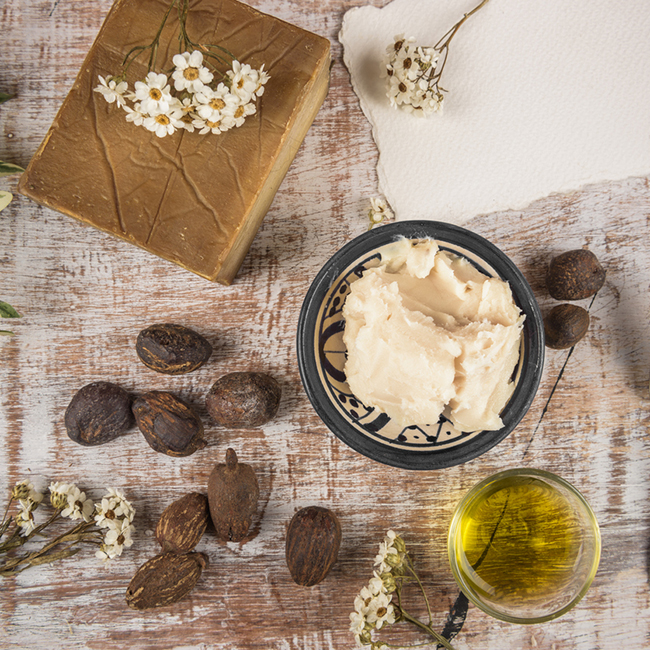One of the most-talked-about topics on NaturallyCurly is ingredients. NaturallyCurly’s community has a deep interest in what is in the hair products they buy, and why it’s there.
We had the opportunity to talk with Dr. Amber Evans, a scientist at BASF Corp responsible for the development of new personal-care ingredient technologies. She earned a Ph.D. in Pharmaceutical Sciences (Cosmetic Science focus”> from the University of Cincinnati and a B.S. in Chemistry from North Carolina Agricultural & Technical State University.

While at P&G, her projects included developing formulations for hair color and conditioners as well as skincare products. She has done extensive research on the effect of hard water on the hair. She is a mentor for the Society of Cosmetic Chemists, which includes chemists for some of curly girl’s favorite brands.
(All views expressed in this article are Dr. Evans’ own, and do represent the opinions of any company is affiliated with.”>
NC: Are you seeing a lot of innovation when it comes to ingredients for textured-hair products?
Dr. Evans: I am seeing some, though limited, innovation when it comes to ingredients specifically for textured-hair care products .But I am optimistic about future innovation.
All consumers, textured and non-textured, are seeking products that keep their hair beautiful and healthy, yet allow them to have a clean conscience. With so many ingredients already registered in personal care, new ingredient innovation will be driven in part by the replacement of existing ingredients with more natural, sustainable and safer alternatives.
This common interest coupled with advances in textured-hair research, customer demand and greater industry awareness will lead to more opportunity for the inclusion of textured hair in ingredient development and testing.
There is still a lot of opportunity with the plethora of existing ingredients, and I have seen innovative approaches to the formulation of these ingredients for textured hair. This includes natural oils, butters, proteins and naturally-derived polymers.
NC: What are the most exciting things you’re seeing in terms of innovation?
Dr. Evans: The growth of high-performing products based on all or majority naturally-derived ingredients is exciting because some of them are competitive with products that are based on traditional synthetic ingredients (based on consumer reviews”>.
While we’re on the subject of natural ingredients, CBD-related ingredients are definitely a hot topic in the beauty industry right now. It will be interesting to see what how this translates to scalp and hair care.
Some of the other exciting things that I have seen are innovative “out-of-the-box thinking” approaches to hair care and styling. This includes product offerings that are more aligned with consumer practices and convenience, such as a styling product sold in a dual container with both high-hold edge control gel and lighter curl-defining gel to alternative product types such as shampoo/conditioner bars and food-inspired product textures.
In the hair-color space, temporary colorants that deposit fun vibrant colors – even on dark hair – are a favorite. Everything is better in color and texture!
Lastly, tools and implements like the twisting sponge, hair steamers and heatless (tension-based stretchers/rollers”> offer convenience and care/styling options. I recently saw a mechanical tool that actually two-strand twists the hair, and the resulting twist-out was nice!

Image:@sedaoficial
NC: What are the special needs when it comes to products for textured hair?
Dr. Evans: The special needs of textured hair are primarily related to the following:
- Moisture retention
- Conditioning
- Detangling
- Strengthening/protection (This is especially important when textured hair has been subjected to chemical treatments like oxidative dyes because they can compromise the internal and external hair structure.”>
- Definition
- Hold
NC: What differences do you see for different texture types – wavy, curly and coily?
Dr. Evans: From wavy to coily hair, the increasing degree of curl (smaller curl diameter”> and fiber ellipticity impacts various characteristics of the hair, concerns and styling practices. While ingredient technologies are applicable to multiple hair types, levels and combinations of those ingredients must be adjusted to address the needs that are specific to certain textures.
This information has been detailed extensively in the TextureTrends report, so I will keep it be brief here.
With its lower curvature, wavy hair is susceptible to frizz to a lesser extent than curly hair and is more susceptible to being weighed down by products. Moving into the tighter textures, curl definition,,anti-frizz and elongation become more important from an appearance and product standpoint. Lubrication for conditioning, moisturized feel and detangling is also key for curly and coily hair. Natural oils from the scalp are less likely to reach the full fiber of more textured hair due to the curly/coily configuration, and each bend and twist on the fiber is a stress point with a higher chance of breakage.
Research has indicated that stretching, fracture and breakage patterns are different in more textured hair. Other work suggests that the heat from flat irons may travel differently based on hair texture. These types of learnings could lead to improved ingredient technologies and products that more effectively protect hair from breakage and other forms of damage.
NC: How have formulations changed over the past 20 years for textured hair?
Dr. Evans: Over the past 20 years, formulations for textured hair have evolved with considerably more options, improved performance and focus. My top 3 observations include:
- From Straightening to Enhancing:The primary focus has shifted from formulations intended to remove texture from hair to those intended to care for and maintain textured hair in its natural state. Traditional chemical straightening treatments have declined in most markets, and much of the emphasis has been on milder and safer alternatives and conditioning additives that can reduce the potential for damage associated with these products.
- Natural vs. Synthetic Ingredients: There has been an upsurge of natural ingredients for all functions (conditioning, styling, scalp care, etc”>, and products have shifted to being formulated with all or much higher levels of majority of natural/biobased/organic ingredients than before. This includes proteins, botanical extracts, seed oils and butters and naturally-derived surfactants. Consumers are more ingredient savvy, preferring efficacious and milder natural alternatives over ingredients like petroleum, mineral oil, some silicones and surfactants with sulfates.
- Greater Variety of Formats: Formulations have shifted from standard formats like gels and sprays to hybrid formats like cream gels and butters with greater specificity for the needs and care/styling practices of textured hair consumers. This includes cleansing conditioners/cowashes, which were certainly not a popular 20 years ago.

Image: Getty
NC: Are you seeing an increased demand from brands looking for new different ingredients/formulations for textured hair? If so, how much of an increase?
Dr. Evans: Yes, there has been a notable increase in brands’ interest in ingredients and formulations for textured hair. Brands are looking to ingredient suppliers for multifunctional ingredients that demonstrate benefits on textured hair, alternatives to now undesirable ingredients like synthetics, sulfates and silicones, and innovative product formats that create unique grooming experiences.
While these are certainly attributes that span the general-hair care market, there is now more awareness and interest in textured hair care. This interest has grown more now that it is apparent that the natural-hair movement is a lifestyle rather than a trend. Inclusion is becoming a market driver, and brands don’t want to miss out.
Q: What would you like to see in the coming years when it comes to offerings from brands, and what types of solutions are BASF offering to these companies?
Dr. Evans: In general, I would like to see brands offering products that are backed by data-driven claims. Consumers want safe, high-quality, multifunctional products with long-lasting effects. The top performance needs for curly and coily types are conditioning, curl definition and anti-shrinkage/elongation. If a product (or system”> could deliver these benefits and somehow activate such that less manipulation (i.e. shingling in small sections”> is needed to achieve the style and maintain length for multiple days without further re-styling, this would be a significant offering.
While that might sound like a lot, textured hair consumers would certainly be content with brands continuing on the current path of providing products with a fair balance of performance, naturality and sustainability.
Companies should leverage the expertise and offerings of ingredient suppliers like BASF for their brand and consumer needs. BASF is a leading ingredient supplier with a comprehensive portfolio of technologies that include surfactants, conditioning and styling polymers, emollients, proteins, bioactives and other care ingredients with use for hair and scalp care. The portfolio boasts several natural and sustainable solutions.
